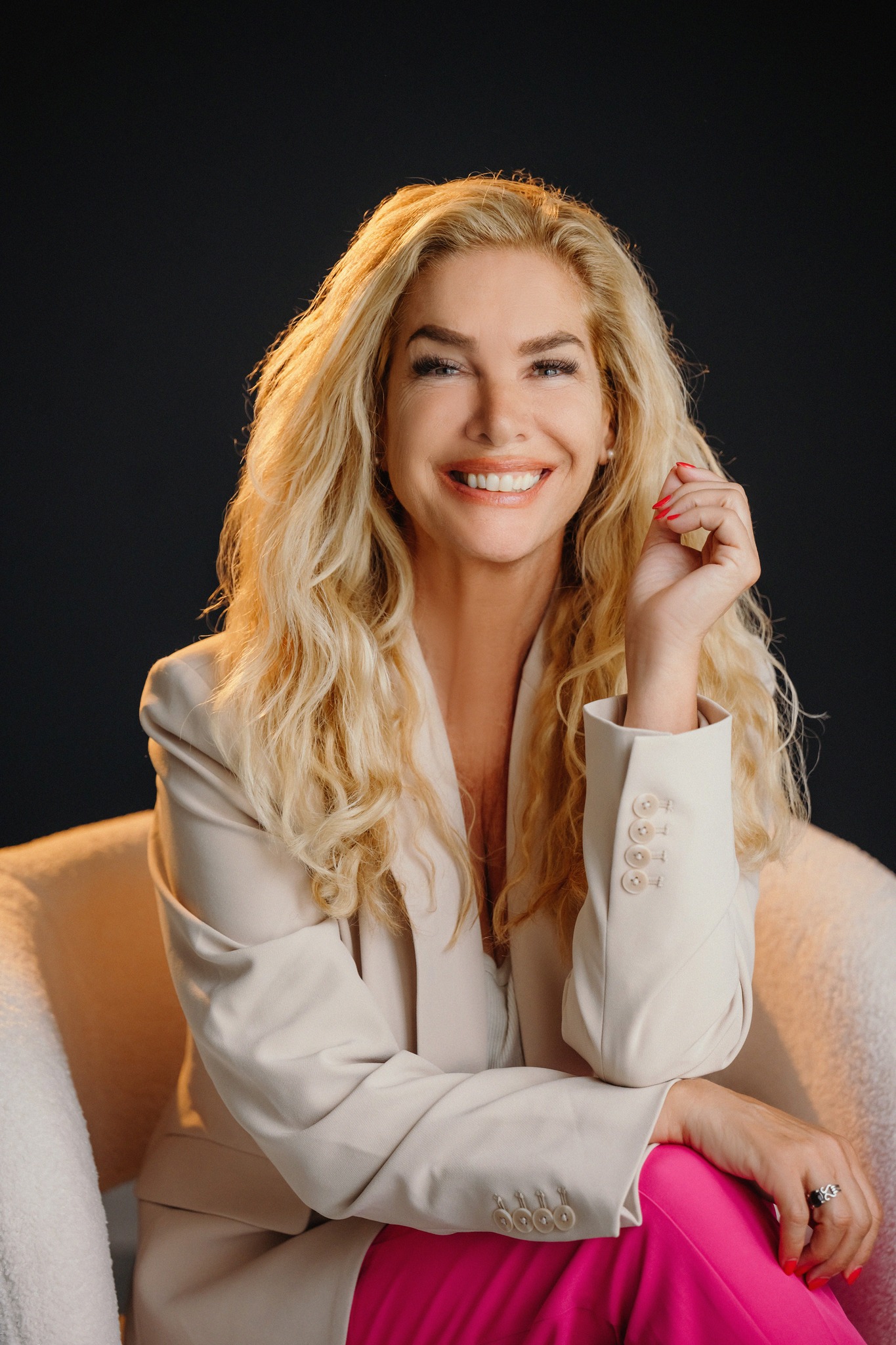
I’m a Death Doula: 4 Reasons I Believe Death Isn’t the End
In this heartfelt piece, Suzanne B. O’Brien shares her experiences as a death doula, guiding people through their final moments.

In her book, Suzanne B. O’Brien, a former oncology nurse & now death doula, shares profound experiences that reshaped understanding of death.
One story that deeply impacted her was about Madeline, a 44-year-old patient with gallbladder cancer. After breaking her hip, Madeline was hospitalised with her sister by her side.
Sadly, within days, a blood clot traveled to her lung, reducing blood flow throughout her body. Through stories like Madeline’s, O’Brien offers insights into the delicate moments at the end of life, showing that death can be a peaceful transition rather than a feared ending.
Her work invites us to see dying in a new light — one filled with compassion, understanding, and even hope.
A Profound Perspective on Death
In her book, Suzanne B. O’Brien reflects on the remarkable experiences that reshaped her understanding of death. One story that left a lasting impression was that of Madeline, a 44-year-old patient with gallbladder cancer.
As her condition worsened, it became clear that Madeline sensed something even the doctors didn’t — she knew she wasn’t going to make it.
One evening, after waking from a nap, Madeline called out with excitement: “Get my sister! I’m transitioning!” She spoke as if she were about to embark on a thrilling new journey, welcoming the unknown with open arms.
Her peaceful acceptance and enthusiasm made O’Brien realise that dying could be a meaningful experience, not just an end. Madeline’s story is what O’Brien calls a “good death” — one where fear is replaced with understanding and even curiosity.
Not every patient has the same experience, and O’Brien admits she felt frustrated working in traditional hospital settings, where time with patients was limited. But witnessing Madeline’s journey forever changed her view on life, death, and what may come next.
Suzanne B. O’Brien’s experiences as an oncology nurse led her to a profound realisation—there had to be a way to support people in their final moments.
Despite the challenges, she followed her heart and transitioned into hospice nursing. There, she noticed clear and consistent patterns among patients, which not only eased her fears about death but also transformed how she lived her own life.
Regardless of a person’s cultural background or religious beliefs, O’Brien observed that dying individuals often express four common thoughts in their final days.
These shared experiences offer deep insights into what it means to pass on, suggesting that death may not be an end, but rather a transition. Through her work, she encourages us to look at life’s final chapter with greater understanding, acceptance, and even peace.
Insights from the End
In her heartfelt reflections, Suzanne B. O’Brien shares four powerful lessons she learned from those nearing the end of life. Regardless of background or beliefs, dying patients often express a sense of understanding and peace that profoundly shifted O’Brien’s perspective on death.
1. There is no death. I’m going home.
Many patients describe a feeling of returning to a place beyond this world — somewhere familiar that doesn’t require a physical body. Some even speak of seeing loved ones who passed before them, giving them comfort and a sense of homecoming.
2. Everything happens for a reason.
As they approach the end, many experience what O’Brien calls a “life review.” They gain sudden clarity about their most painful experiences, seeing them not as random suffering but as important lessons for growth and change. This realisation brings peace and acceptance.
3. There is no judgment.
In their final moments, patients often let go of regret and resentment. They come to understand that mistakes are part of being human, finding forgiveness for themselves and others. This sense of release offers a gentle closing to their life’s story.
Through these shared experiences, O’Brien invites us to view death not as something to fear but as a transition filled with wisdom, forgiveness & love.
Suzanne B. O’Brien’s journey as a hospice nurse revealed deeply moving insights about life and death. Through countless experiences with patients, she noticed patterns that reshaped her understanding of what happens at the end — and what it means for the living.
1. There is no reckoning — only love.
Dying patients often express that there is no punishment after death. Instead, they believe life was a journey of learning, and what remains in the end is pure love.
2. We are all connected.
Regardless of past beliefs, many come to feel a deep connection with everyone and everything. People who once held grudges or prejudices suddenly realise we’re all part of one loving energy — tied not just to other humans but to animals, trees, and even the smallest particles of existence.
Other Common Phenomena at Life’s End:
The End-of-Life Rally:
It’s surprisingly common for those nearing death to experience a sudden burst of energy. Even after long periods of unconsciousness, patients may briefly wake up with unexpected strength and clarity. In these precious moments, they often say their goodbyes, express love, and find closure before peacefully passing soon after.
Choosing Their Time:
Another phenomenon O’Brien observed is that many people seem to have control over the timing of their death. Whether waiting for a loved one’s arrival, a meaningful date, or an important milestone, they often hold on until the moment feels right.
Through these experiences, O’Brien invites us to rethink death — not as an end, but as profound transition filled with connection, love & understanding.
What the Dying Teach Us
In her work as a hospice nurse, Suzanne B. O’Brien witnessed remarkable experiences that reshaped her understanding of death. She discovered that end of life is often filled with love, connection & even moments of mystery.
Choosing the Right Time
Many patients seem to have a sense of control over when they pass. O’Brien shares the story of a woman who held on for ten days, finally passing just four hours after midnight on her 100th birthday.
Some wait for a loved one’s arrival to say goodbye, while others hold on until they’re given permission to go. A simple, heartfelt message like, “I love you. It’s okay to go. You don’t have to suffer anymore,” can offer great comfort and peace.
Slipping Away Alone
Surprisingly, many patients wait until loved ones step out of the room to take their final breath. While this can be difficult for families, hospice nurses like O’Brien know this happens often — perhaps as a final act of love, sparing others the pain of witnessing their last moments.
Visits from the Departed
One of the most extraordinary phenomena O’Brien encountered was patients speaking of visits from those who had already passed. Research shows that up to 72% of the dying report seeing loved ones who have crossed over.
Whether these seen as hallucinations or genuine connections, many families find comfort in idea that their loved ones are not alone when they pass.
O’Brien recalls a woman named Helen, who believed her late husband was coming to take her dancing. She even asked for something nice to wear.
Moments like these reveal a profound sense of peace — and perhaps even joy — at the thought of being reunited with those who have gone before.
Through stories, O’Brien encourages to see death not as end but as natural, even beautiful, transition filled with love, connection & understanding.

Finding Peace in Life and Death
In her book, The Good Death: A Guide for Supporting Your Loved One through the End of Life, Suzanne B. O’Brien shares the profound lessons she learned from those facing their final moments.
One touching story is about Helen, a woman who believed her late husband was coming to take her dancing. Her niece found a beautiful dress and red shoes, placing them where Helen could see them every day.
Helen passed peacefully that weekend, comforted by the idea of a loving reunion. These experiences changed O’Brien’s perspective on life.
She began to treat each day as a gift, cherishing small moments and focusing on kindness. Whether it’s offering a smile or holding a door open, she believes even the simplest acts of service matter.
Her journey led her to create the Doulagivers Institute, training professionals and family caregivers to support the dying with compassion and understanding. Through her work, she has come to see life and death as part of a sacred journey — one filled with connection, love, and gratitude.
O’Brien’s book is a heartfelt guide, showing that even in death, there is beauty and peace. It reminds us that every moment counts and that we are all connected in this shared experience of life.
Never miss any important news. Subscribe to our newsletter.
Related News


British Investor Who Predicted US Slump Warns of Next Crash

I’m a Death Doula: 4 Reasons I Believe Death Isn’t the End


Tech to Reverse Climate Change & Revive Extinct Species

AI Unlocks the Brain’s Intelligence Pathways

XPENG Unveils Iron Robot with 60 Human-like Joints

Can AI Outsmart Humanity?

11 ChatGPT Prompts to Boost Your Personal Brand

Keir Starmer Hints at Possible Tax Hikes on Asset Income

Navigating the Future of AI: Insights from Eric Schmidt
